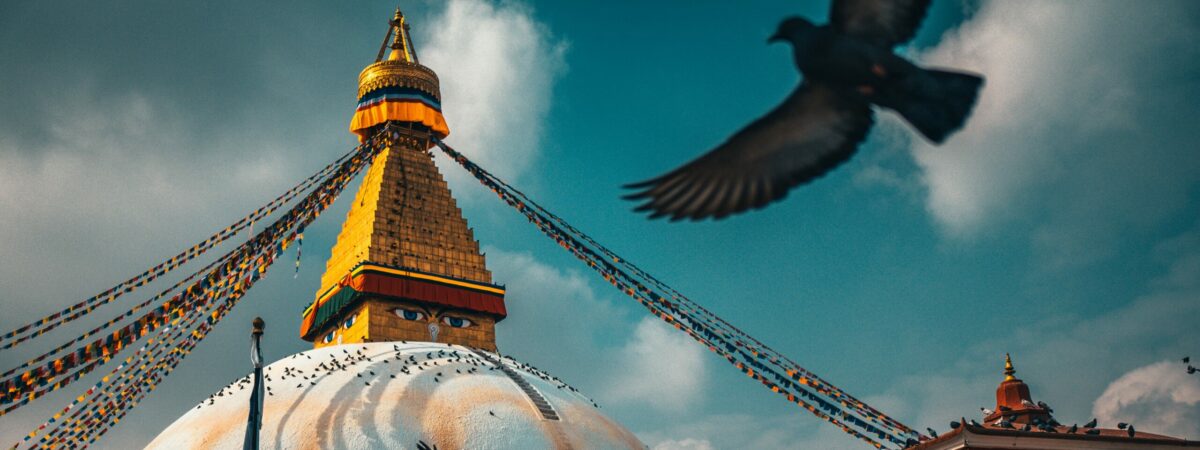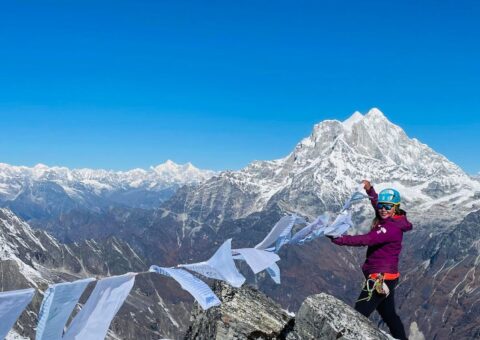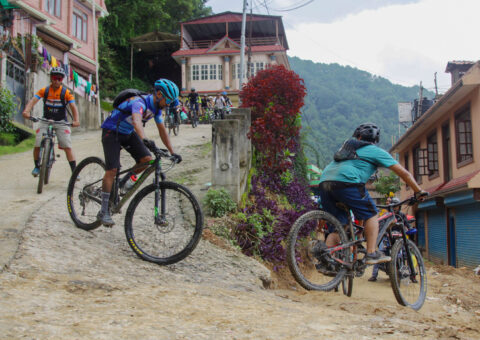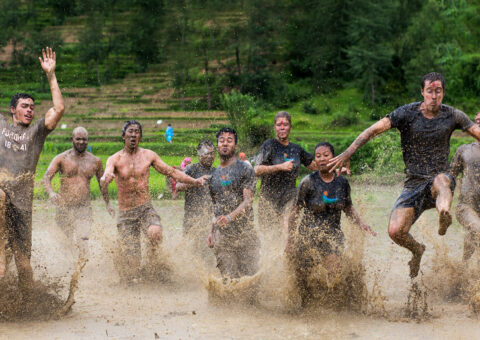There is no ideal way to describe Kathmandu, the capital city of Nepal. The very pulse of the country, Kathmandu is chaotic, haphazard, religious, friendly, vibrant — everything all at once. And in this chaos lies its charm, offering travellers much to see, do, and eat during their time here, says local expert Marissa Taylor.
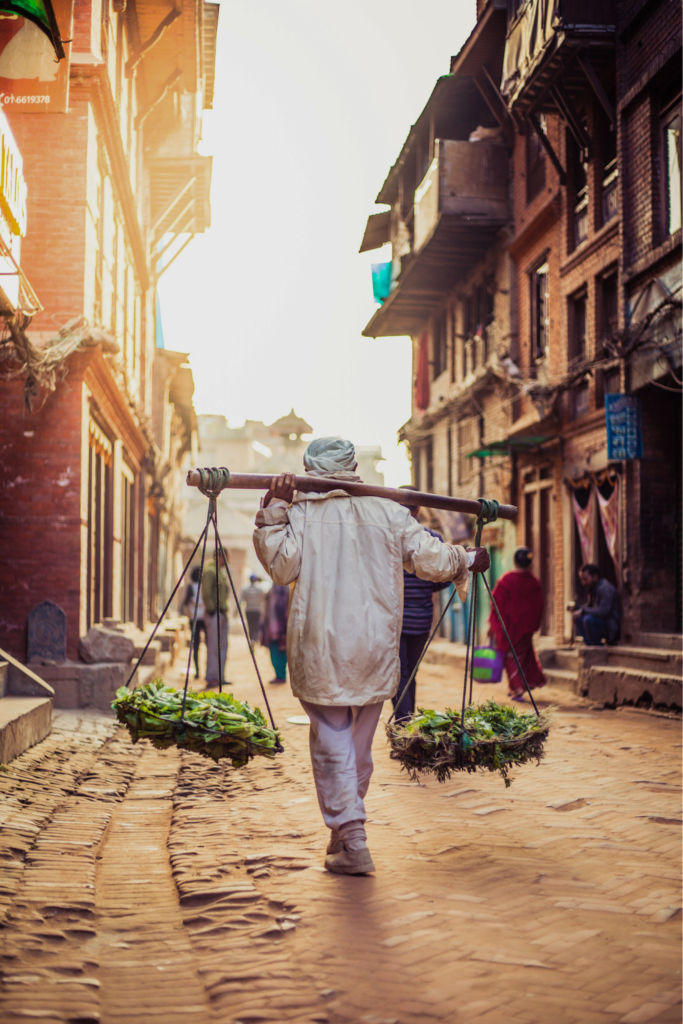
Upon Arrival
After a visitor arrives in my city, I always recommend going straight to Kathmandu Durbar Square because it is the city’s heart. The Durbar Square (“durbar” means “palace” in Nepali) was the palace of the kings of Nepal until around 200 years ago, but today it is home to one of the city’s oldest museums and major temples, buildings, and monuments — some of them built as early as the 4th century.
The best time to be here is autumn (October and November) or spring (March and April). That’s when the weather is most pleasant and the skies are clear.
I tell first-time travellers to walk around the Square and take in the chaos that is Kathmandu. I also tell them to avoid straying away too far from the main roads. It won’t take much to get lost in Kathmandu’s labyrinth network of streets if you’re new here.
People from here know better than to eat from any roadside food stall. Instead, they would rather stick to eating at restaurants and always drink bottled water.
The best museum to start your journey and get a good sense of this city is the National Museum in Chhauni because it is the largest museum in the country housing everything from exquisite metal and stone statues of Hindu and Buddhist deities to old manuscripts dating back centuries to leather cannons seized during the 1792 Nepal-Tibet war. A trip to the museum will give first-time travellers a good overview of the city’s (and the country’s) political and cultural history.
Parents should take their kids to Bhrikuti Mandap Fun Park, the country’s first fun park, because it offers some rides for kids to enjoy. Although the park is modest in terms of the rides it offers, it can be amusing for kids. For more adventurous kids, there are wall-climbing arenas in Thamel, a 20-minute walk away from Kathmandu Durbar Square, at places like Astrek Climbing.
Food from the Heart
Because Kathmandu is the capital of Nepal and historically an important trading point for Tibet, it is a melting pot of people from all ethnicities and cultures. This is most evident in the food that is found here. While the traditional dal bhat tarkari (rice and lentil soup with vegetable/meat curry) is the staple food for most people, among the food (or dishes) my city is most proud of, momo (bite-sized dumplings) is an absolute must. You cannot come to Nepal and not eat some momos.
I like to go to Nanglo Bakery Cafe to really enjoy it, as the momos here have a spicy Nepali twist to them. Nanglo is one of the oldest restaurant chains in the country, and its branches can be found across the city.
When we get together to celebrate, chhanng (local beer made from rice) is what people here traditionally drink. But factory-produced Nepal-made beers are also popular. I like to gather my friends and go to Basantapur for a round. You can find the drink in any local joint.
When I eat completely local, I will go to a Newari restaurant. Newars are the original inhabitants of the Kathmandu Valley and their food is rich in spices and flavours. Some of the best Newari joints are Harati Newari Restaurant in Nayabazar and Jheegu Bhwoychhen Restaurant in Jyatha. I know the food here is always great because you can’t go wrong with Newari food. A typical Newari meal will include some chhoyla (barbecued buff meat), fried eggs, beaten rice, aloo ko achar (spicy potato salad), bara (a pancake made of lentil batter), and aloo tama (a soup of potatoes and bamboo shoots).
Another two classic, iconic restaurants include Third Eye and Fire and Ice, which are some of the oldest restaurants in the city that offer continental food.
The part of town where locals come for traditional food is Basantapur/Jyatha for some Newari food.
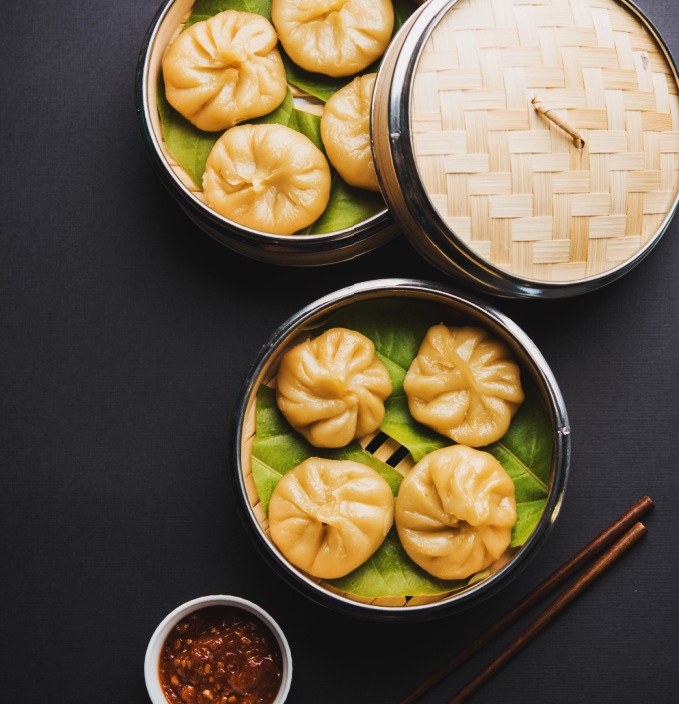
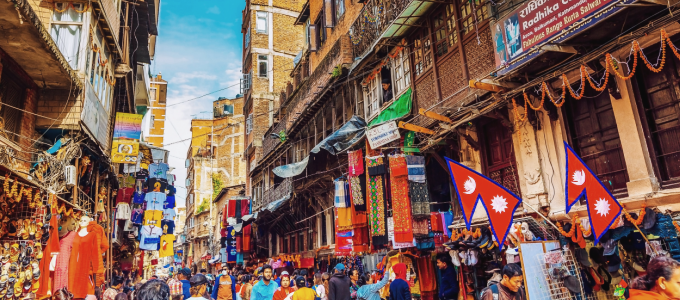
Shopping Locally
My city is known for making pashmina, thangka, rugs, and metal work — all of which can be purchased in shops in Thamel.
There is no outdoor food market in Kathmandu as such. But the areas with the best restaurants in the city are Thamel, Lazimpat, and Boudha. And the best outdoor market to buy everyday items like fruits, vegetables, spices, and even clothes and electronics is Asan, a market and residential square that is in a state of perpetual bustle.
I always take visitors to Thamel to buy real, local souvenirs. The products are made in Nepal and choices are plenty, which means you have a lot of room to bargain, and the vibe is lovely. And we know to avoid buying anything in a mall because items sold there are not locally produced and extremely overpriced.
Getting Deeper into Kathmandu
A great book to learn more about my city is Thomas Bell’s “Kathmandu.” The book is a great introduction to the city’s history, culture, religion, and recent political changes.
Most people know about the popular sites like Kathmandu Durbar Square and Boudha and Swayambhunath, but smaller, lesser-known sites like Kathesimbu Stupa should also be visited because of the religious significance it holds. The stupa is built as an exact replica of Swayambhunath Stupa for those devotees who cannot make it to Swayambhu (because reaching the stupa means walking a small hill made of hundreds of stone steps).
My city is a place people are attracted to because of its amalgamation of different cultures, people, and food.
To really celebrate my city at its best, come during September, when the city witnesses one of the biggest Newari festivals, Indra Jatra. This eight-day festival also marks the beginning of a month-long festival season of autumn. It gives travellers a chance to really immerse themselves in local Newari culture.
Kathmandu is the only city with an international airport in Nepal, thus, most people think of my city as a place to stopover before heading out to another destination, most likely in the mountains. But really this is a destination to seep in Newari, Buddhist, and Hindu cultures and traditions.
This is one of the best places in the world to experience possibly the best hospitality in the world. Locals are proud of that because they are very carefree people who really will go to great lengths to help you out.
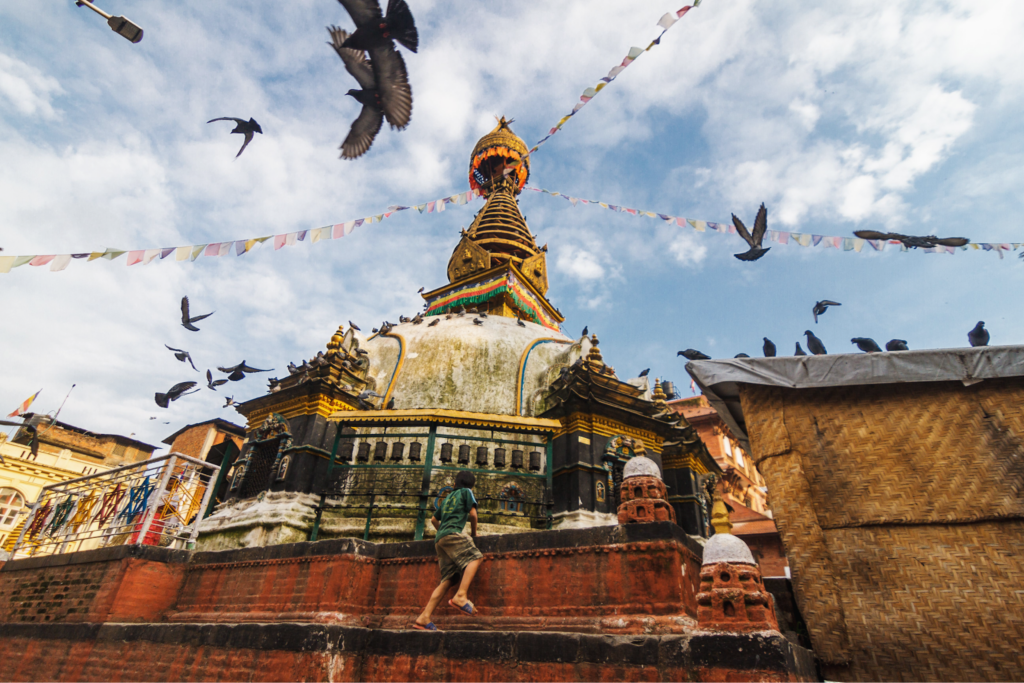
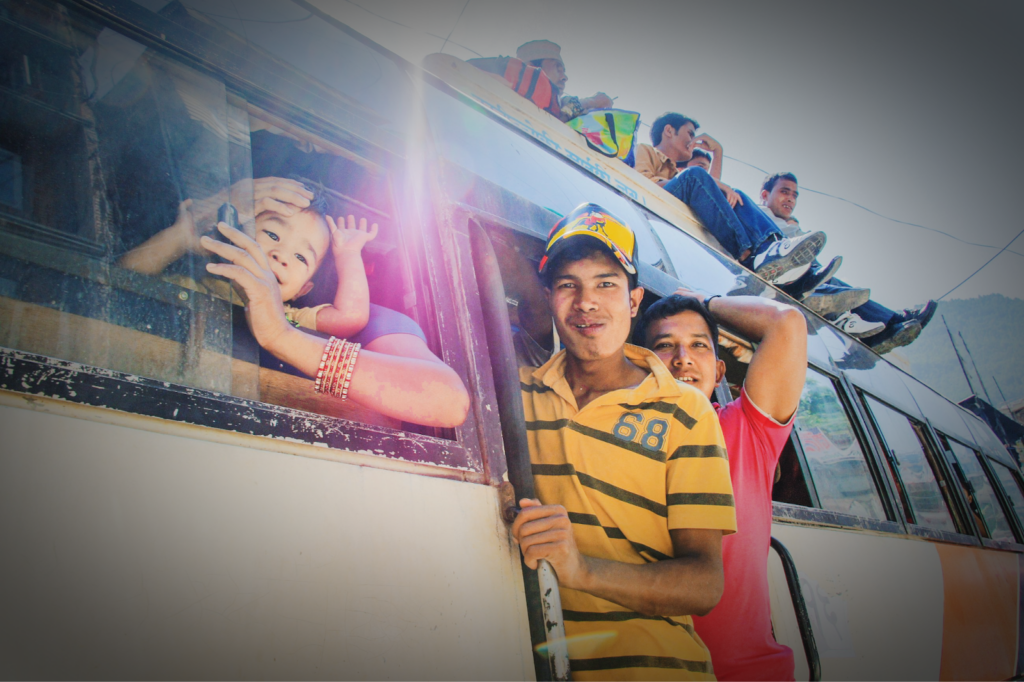
Getting Around Kathmandu
One thing you should know about getting around my city is that traffic is a pain. Because Kathmandu is the most populated city in Nepal, there are quite a lot of traffic jams, but as far as transportation goes, you will find public buses will take you anywhere. The major bus parks are Ratna Park, Sundhara, New Bus Park, and Old Bus Park.
The best way to travel in my city to have as little impact as possible is to walk. Kathmandu is a vast valley but the core city itself isn’t that big: You can get by with walking in most places.
Luckily this method of transportation also allows me to immerse in the city’s pulse and witness Kathmandu’s chaos — and its charm — firsthand.
Outside the City
To get away and into the outdoors, I like to head to Shivapuri National Park, which is what falls on the northern rim of the city. The national park offers hikers much respite from Kathmandu’s busy life in its forested trails.
For a day trip just beyond my city, I like to visit Nuwakot, a historical town with interesting architecture and beautiful landscape. Nuwakot was once a kingdom on its own as well and the old palace is still there, which you can visit. The place is also famous for its trout farms and strawberry fields.
Many people will head to Nagarkot or Dhulikhel, very popular destinations for a day trip near the city, but locals know to really immerse in a place, you have to spend a bit more time getting to know the local and unexplored areas.
I really enjoy the view of my city from Tare Bhir, which is the name of a hill and also a popular hiking destination. From Tare Bhir you get a sweeping view of the city, which is particularly beautiful at night when Kathmandu is all lit up against the night sky.
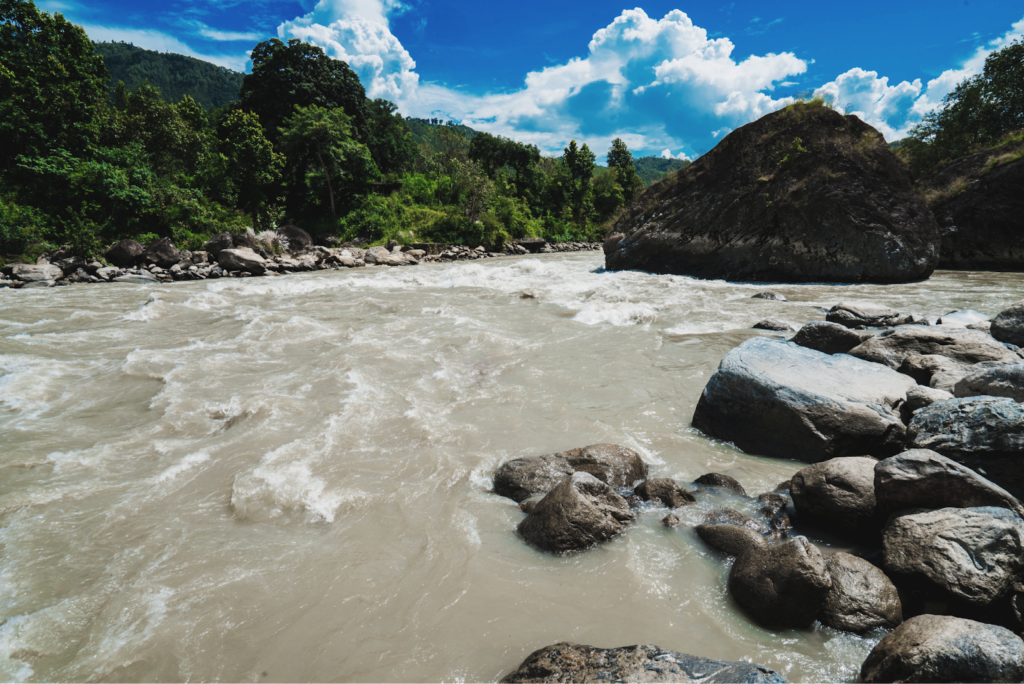
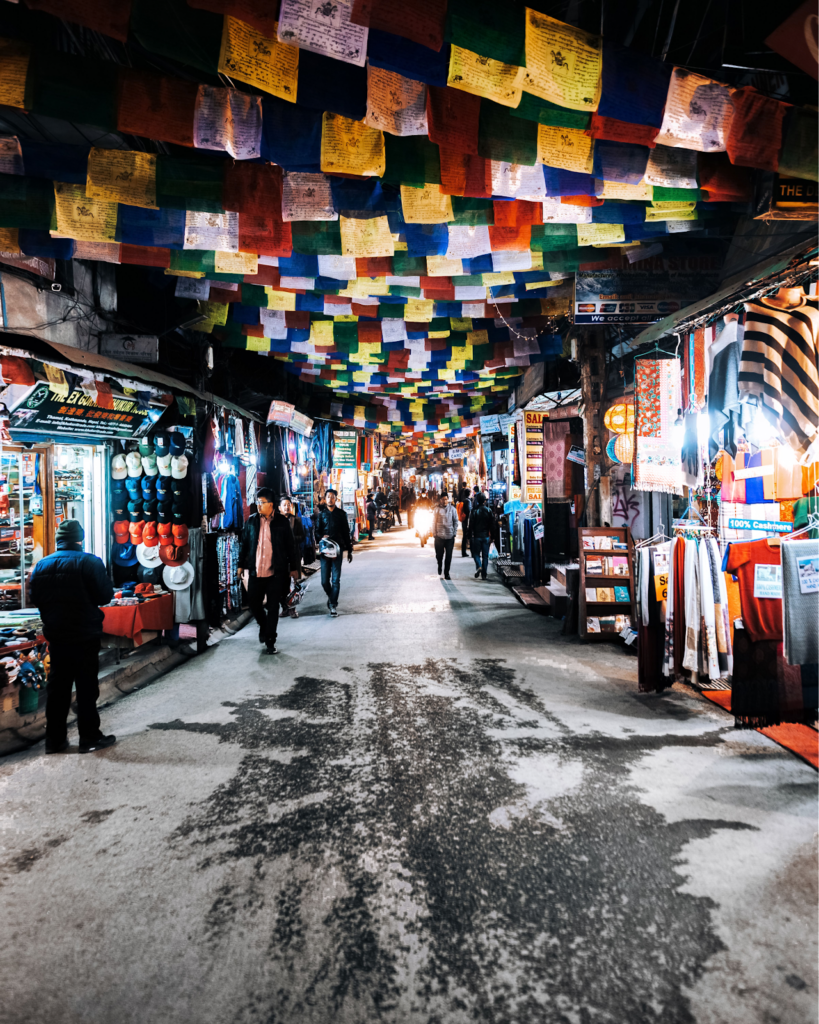
Connecting with Locals
When I want to have fun and celebrate being out in my city, I will go to Thamel, whose nightlife is always thriving, as it is the only place in the entire city that is open 24×7.
To hang out with my friends and go to a real insider spot, I go to Sam’s Bar in Thamel, where there is reasonably priced locally produced alcohol. The place is popular among both Nepalis and foreigners, and you can strike up interesting conversations with new people here.
The best resource for finding out what’s going on around town is through people, really, or through social media. There’s also a website, called kgarira, which lists events around the city.
When I want to enjoy my city without spending much (or any) money, I will head to either Basantapur or Boudha. Both these places have great food and local alcohol that is easy on the wallet. One place travellers could try in Basantapur is Beer N Nuts and Kalimpong Complex in Boudha.
Jazz Upstairs in Lazimpat is my first choice for music because it has amazing music and great food. Every Wednesday and Saturday a local band plays. And when I feel like dancing, I go to LOD (Lord of the Drinks), one of Kathmandu’s most happening clubs, for the vibe and the DJ sessions.
Finding Solitude in Kathmandu
When I want to go somewhere to sit and meditate about my incredible city, I go to Pashupatinath Temple, one of the most important religious sites for Hindus across the world and one of the oldest temples, believed to have been built in 400 CE. Situated near the holy Bagmati river and a small forest, the temple is the perfect place for a quiet moment to myself — unless I get interrupted by one of the hundreds of monkeys that call the forest their home.
If I chose the one place that makes me most proud of my city, it would have to be Boudha because the place in many ways symbolises how the people of Nepal live harmoniously together, no matter their religion and roots.
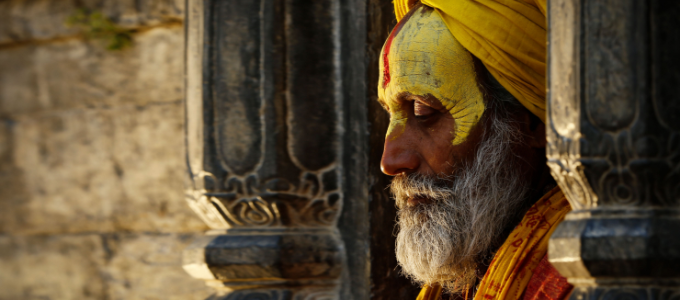
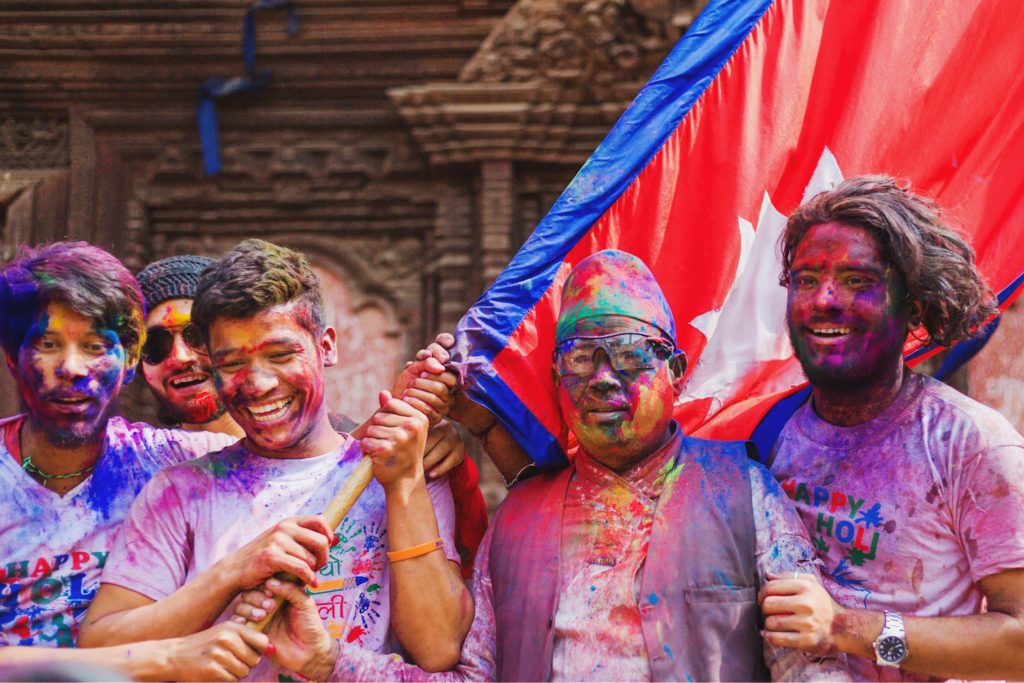
When the Seasons Change, This City Shines
Spring (early March-late April) is the time to enjoy one of the funnest Hindu festivals, Holi, the festival of colours, which is celebrated across the country. It is particularly fun at Basantapur, where the whole city comes together to play.
I always recommend visitors to visit some of the waterfalls and natural pools in the summer months (May-September) because the temperature is perfect for a dip.
The fall (October-November) here is magical when you can make the most of the pleasant weather and be outdoors. The biggest festivals of Dashain and Tihar also take place during these months.
The winter months (November-February) is a great time to be indoors. A great idea would be to explore Kathmandu’s museums to really immerse in its political and cultural history. A visit to Hanuman Dhoka Palace Museum is a must. And so is a visit to the Narayanhiti Museum, which was the last palace the royal family resided in before the 2001 massacre happened, in which the entire royal family was killed.

